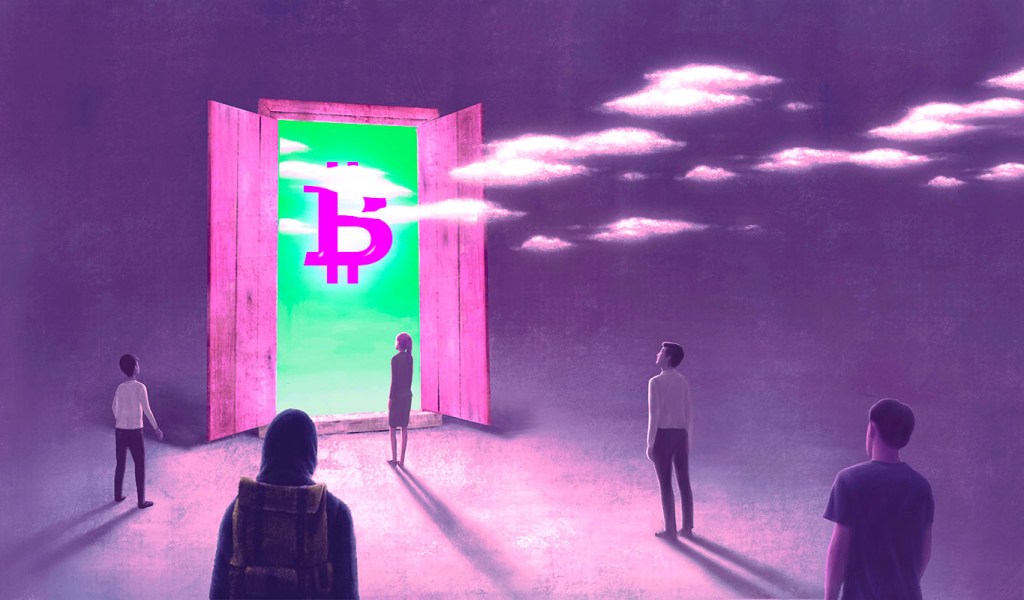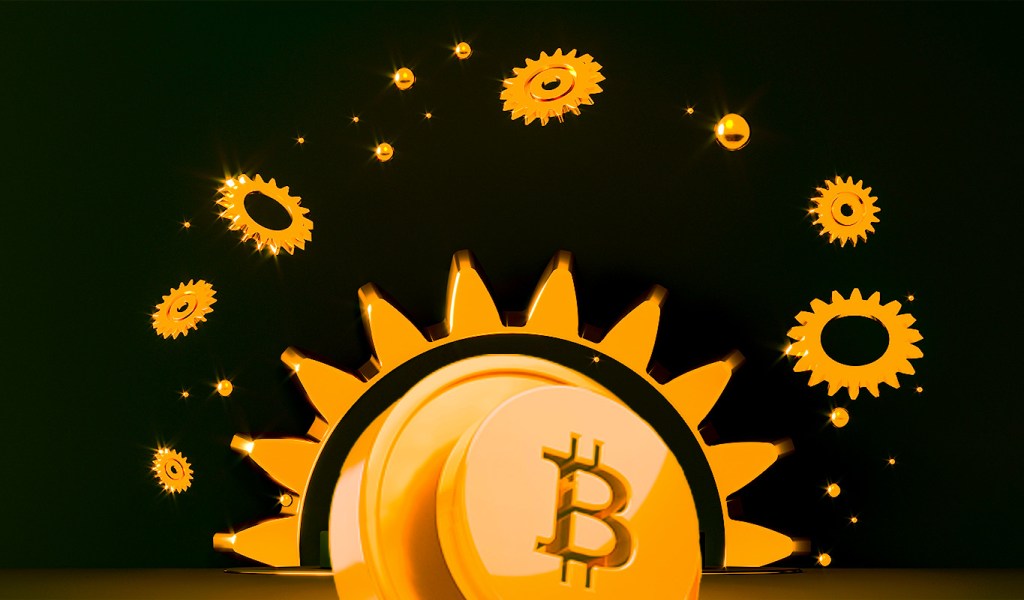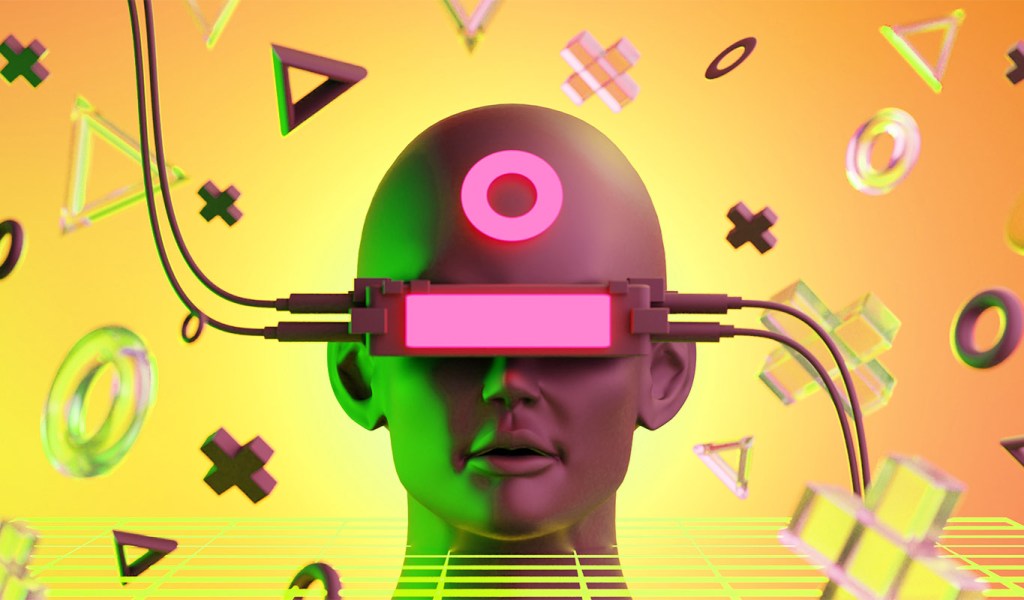
The chief executive of crypto exchange OKX says that he’s being encouraged to list more Bitcoin (BTC) ordinals as the total market cap of BRC-20 tokens jumps 30% in one day. In a lengthy thread, OKX CEO Jay Hao tells his 65.500 followers on the social media platform X that while he’s being urged to […]
The post OKX CEO Says He’s Being Urged To List More Bitcoin Ordinals As BRC-20 Total Market Cap Soars 30% in a Day appeared first on The Daily Hodl.

Billionaire Tim Draper is updating his outlook on Bitcoin (BTC), saying that the mass consolidation of crypto tech is coming to the flagship digital asset. In a new interview with Coin Bureau, the venture capitalist likens BTC to Microsoft, saying that it will serve as the main platform for developers within the industry to launch […]
The post Billionaire Tim Draper Reveals BTC Forecast, Says Mass Consolidation of Crypto Tech Coming to Bitcoin appeared first on The Daily Hodl.

More than a third of survey respondents believed the blockchain gaming industry benefited most from traditional game studios adopting Web3 tech in 2023.
Nearly 40% of blockchain game developers believe that traditional gaming studios will be one of the biggest positive driving forces for the Web3 gaming sector in 2024.
In its “2023 State of the Industry Report,” released on Dec. 12, the Blockchain Gaming Alliance (BGA) found that 37.8% of respondents believed Web2 studios launching new games in Web3 or applying blockchain elements to existing titles would help push the industry forward in 2024.
When asked to identify the biggest positive driver in 2023, 19.8% of respondents cited traditional game studios launching nonfungible token games, while 15.2% pointed to the same studios transitioning into Web3.

One of the biggest stars of the most popular sport in the world is being sued in a class action lawsuit over his involvement with Binance non-fungible tokens (NFTs). According to a new Associated Press report, Portuguese soccer star Cristiano Ronaldo (CR7) is on the receiving end of a $1 billion class-action lawsuit for promoting NFTs […]
The post International Soccer Star Cristiano Ronaldo Hit With $1,000,000,000 NFT Class-Action Lawsuit: Report appeared first on The Daily Hodl.

Greed, irrationality and anxiety have contributed to chaos in the crypto market. Investors should work on self-improvement if they want the industry to succeed.
Exorbitant NFT values that year signaled strong belief in many projects. But two years later, those “next Disneys” have delivered little. The situation has created significant market frustration and disillusionment among investors and enthusiasts alike.
Project failures are often attributed to founders. Yet, the greed, anxiety, and irrationality prevalent among Web3 participants have also played a substantial role in the ecosystem.
Related: 3 theses that will drive Ethereum and Bitcoin in the next bull market
We’re in a complex environment where even the most skilled and visionary founders find it challenging to navigate the market dynamics. This often leaves a trail of unfinished projects and unfulfilled promises, further eroding trust in the sector.
Imagine a party with tickets priced at $100. Someone eager to attend with friends misses the initial sale. Turning to the secondary market, they pay $500 for a ticket.
The likelihood of disappointment is high since the event intended to offer a $100 experience. With a $500 ticket, expectations are inevitably higher, which often means the experience doesn't match reality.
In the crypto market, this greed-induced frustration is apparent. You can pay 20 Ether (ETH) for an NFT that initially sold for 0.5 ETH, but it is essential to align your expectations with the 0.5 ETH value. (That’s especially true considering how Web3 royalties have declined, a situation that has also prevented founders from obtaining the benefits of high-value secondary sales.)
Place your mental emphasis on the first price you see for an item — instead of taking the full context into account — is known as anchoring bias, where initial information heavily influences later decisions and perceptions. That means buyers view the high price of NFTs they purchase as an "anchor" for their expectations regarding utility leading to a cycle of disappointment.
Developing a quality product takes time. But the market often expects unrealistically quick progress.
That expectation puts immense pressure on builders and founders, who find themselves in a cycle of continual announcements to satisfy the community's desire for constant stimulation and progress.
In the last cycle, big gaming projects offered one example of this phenomenon. Some individuals believed that ambitious Triple-A games — built on Unreal Engine 5 — would be delivered in mere months, even though they typically require three to five years of development.
They dumped their tokens when they realized it would take longer, because one year feels like 10 when you're addicted to volatility.
In some cases, opening the process of building to the public is a blessing that Web3 has made possible. However, it can also create a toxic climate that negatively affects the mindset and well-being of project founders.
Studies have indicated that roughly 75% of venture-backed startups fail.
Like startups, NFT collections operate in risky, experimental environments. Yet, the market often overlooks the risk, instead expecting indefinite success and growth.
This is highly driven by confirmation bias, a psychological phenomenon that involves putting an emphasis on information that aligns with a person’s existing beliefs and preferences while ignoring contradictory evidence.
During the previous bull run, this was epitomized by "WAGMI,” an acronym for “We’re all going to make it.”

But in a market driven by buying and selling, some participants must lose in order for others to win.
That unfortunately means there is no WAGMI — especially in an environment with low financial literacy and a lot of anxiety. This combination can be particularly dangerous as it leads to decisions driven more by emotion than rational analysis.
Related: History tells us we’re in for a strong bull market with a hard landing
On the bright side, the ecosystem has evolved a lot since 2021. The good projects that managed to adapt to market changes and the market context are becoming more evident, and there has also been significant human maturation.
Many founders became “CEOs” overnight, which is analogous to changing a car's tires while it's moving at 100 miles per hour — 24 hours per day, seven days per week. After almost three years and some pivots, many of these CEOs and teams are much more mature, prepared, and focused on delivering something of value.
And while success depends largely on them, it also depends on the maturity of the Web3 community. Good leaders will not be enough to fix the game if it’s broken by excessive greed, anxiety and irrationality. Investors should consider this — and try to improve, financially and personally — as we enter the next bull run.
This article is for general information purposes and is not intended to be and should not be taken as legal or investment advice. The views, thoughts and opinions expressed here are the author’s alone and do not necessarily reflect or represent the views and opinions of Cointelegraph.
In 2021, it seemed as if 10 new Disneys — and the next 20 Picassos — were emerging from blockchain and various nonfungible token (NFT) collections.

A non-fungible token (NFT) marketplace is surging after being listed by the largest crypto exchange platform by volume in the world. In a new announcement, crypto exchange Binance says it is listing BLUR, the governance token of Altcoin Blur, a decentralized NFT marketplace that offers real-time price streams and comparisons. According to Binance, BLUR will […]
The post NFT Marketplace Altcoin Blur Leaps After Listing on Top Crypto Exchange by Trading Volume Binance appeared first on The Daily Hodl.

The company said Symbiogenesis NFTs will be auctioned off in three separate phases.
Final Fantasy game developer Square Enix announced auction dates for its upcoming Symbiogenesis non-fungible tokens (NFTs). In a Nov. 24 social media post, the team said it would sell the NFTs in three batches. The first batch will be auctioned from Nov. 27-28, the second from Nov. 30-Dec. 4 and the third from Dec. 2 to Dec. 3. Symbiogenesis is Square Enix’s upcoming blockchain game that features Ethereum-based NFTs.
Starting next week, it's finally time for the start of the auction!
— SYMBIOGENESIS -NFT Art&Game Project- | SQUARE ENIX (@symbiogenesisPR) November 24, 2023
Phase 1: 11/27 12:00 - 11/28 11:59 (JST)
Phase 2: 11/30 12:00 - 12/1 11:59 (JST)
Phase 3: 12/2 12:00 - 12/3 11:59 (JST)
More details herehttps://t.co/MFprrApwio#SYMBIOGENESIS
According to the game’s documents, the first phase will include facet and mesh characters and will only allow “stakeholders” to participate. This seems to imply that only early investors will be able to participate in the Novemb 27-28 phase. The second and third phases will be available to participants in an “allowlist entry campaign,” the documents state.
From Nov. 7 to Nov21, the game’s team ran the allowlist entry campaign. Collectors were asked to participate in a series of quizzes, as well as a “treasure hunt” that took place within a prototype version of the Symbiogenesis game world.

The participants earned NFT “relics” as a result of these activities, and they scored points toward participating in phase 2. The to 50 highest scores will be allowed to acquire NFTs in phase 2, as well 40 random participants ranked 51st to 300th. The rest of the participants will be allowed to bid on items in phase 3.
Square Enix describes Symbiogenesis as a "narrative-unlocked NFT entertainment" game. It is scheduled to be launched on Dec 21.
Square Enix is the creator of the Final Fantasy series of games, which the company claims has sold over 173 million units. It launched Final Fantasy NFT trading cards on March 31. In April, the company announced it was partnering with Web3 infrastructure provider Elixir, although details of the partnership have been scarce.

The chief executive of non-fungible token (NFT) marketplace OpenSea is announcing job cuts as the firm says that it’s rebuilding from the ground up. In a thread on the social media platform X, OpenSea CEO Devin Finzer says that the prominent NFT marketplace will be building a new foundation for faster innovation and upgrading its […]
The post OpenSea CEO Announces Job Cuts, Says NFT Marketplace Building New Foundation for Faster Innovation appeared first on The Daily Hodl.

“It’s not just a piece of artwork”: Mintable CEO Zach Burks argues that the United Kingdom government still hasn’t caught up on what NFTs are becoming.
The United Kingdom’s government is in danger of regulating nonfungible tokens (NFTs) in a way that doesn’t suit the true nature of the nascent technology, says Mintable CEO and founder Zach Burks.
In an interview with Cointelegraph, Burks said he believes a recent report from a U.K. parliamentary committee significantly exaggerates the role NFTs play in copyright infringement and fails to recognize that they are more than just volatile digital pictures.
“NFTs are in a transition phase where they’re moving away from the speculative boom of PFPs, and now it’s going into utilities of brands implementing NFTs across a whole range of different things,” Burks explained.
In the Oct. 11 report, the Culture, Media and Sport Committee urged the government to take action to protect artists and content creators from copyright infringement associated with NFTs.
NFT marketplaces need to do more to address the scale of copyright infringement on their platforms.
— Culture, Media and Sport Committee (@CommonsCMS) October 11, 2023
We've published our report on "NFTs and the Blockchain: risks to sport and culture".
Find out more: https://t.co/4pYE6gAngw
Read our report: https://t.co/XIj0LYlcrX@cj_dinenage pic.twitter.com/GTbtOJCM8m
Burks acknowledged that copyright protections and intellectual property rights for artists are of paramount importance, pointing to Mintable’s own IP protection algorithm it uses to prevent plagiarism on its platform.
However, he explained that while these issues should be a top priority for all NFT platforms, they’re not exactly NFT-specific concerns.
“These are problems inherent to the internet, not to NFTs.”
“Regulators say, ‘Well now, NFTs are being used for copyright infringement.’ Well yeah, so is WordPress. So is YouTube. So is Spotify,” he said. “And how do you combat that? Well, you have some of the largest, most advanced companies in the world, like Google, working on this.”
“They’ve got hundreds of billions of dollars, and they can’t solve the problem of combating copyrighted material on YouTube. It’s not like this problem just came up out of thin air because NFTs were created.”
Burks, who personally corresponds with U.K. government officials on NFTs on a weekly basis, said that while NFT platforms should be doing their utmost to protect artists, it falls on regulators to embrace a more nuanced view of NFTs as a whole.
Was such a great time speaking at the 40th International Symposium on Economic Crimes at Cambridge University in the UK!
— Zach Burks (@ZachSpaded) September 14, 2023
Learned so much, met some amazing people, and hopefully educated the people who listened to my many panels about NFTs and the blockchain space! pic.twitter.com/txExSVqTIb
“There are so many ways that you can utilize NFTs, whether it’s for your car records, for your property records, whether it’s a bank settlement document, whether it’s a backup layer, whether it’s a full supply chain system or a biofuels company,” he said.
“It’s not just a piece of artwork or a financial instrument. […] An NFT is effectively a website.”
“If my website is used to sell books, I’m governed by the laws that are used to sell books. If I sell drugs on my website, then you don’t need new laws. I’m still just selling drugs, right?” he said, laughing.
In Burks’ view, NFTs are an extremely broad technology capable of a vast array of different functions, and having a committee declare that they be regulated as pieces of digital art could be a significant setback to unveiling the true utility of the technology.
“The [committee] said the government should implement the EU 17 copyright directive on NFTs, which is bad in the sense that it’s a really broad umbrella,” he said.
Related: NFTs aren’t dead — they’re just resting
In the report, the committee said the “most pressing issue” raised by NFTs was the risk to artists’ intellectual property rights arising from the ease and speed at which tokens can be minted. It suggested they be regulated under a relatively narrow copyright directive: Article 17 of the European Union Directive on Copyright.

“When you say all NFTs need to have this one element of regulatory coverage, this is the equivalent of saying, ‘We need this one piece of legislation that covers this piece of technology,’ which might’ve started at the Edison light bulb but now we’re dealing with Teslas,” Burks said.
“So, we have to be very careful when it comes to these kinds of overarching regulatory frameworks that we apply to NFTs as a system, as opposed to looking at NFT for what they really are.”
Ultimately, Burks believes the U.K. government could take some notes from regulators in Singapore, where the government judges NFTs by their specific use cases.
“Regulators in Singapore look at what an NFT actually is, and then they go from there,” he explained. “Say you’ve got an NFT of a Tesla stock. Well then, that’s a security. Oh, this is an NFT of a bag of cocaine that’s facilitating the sale of drugs? Then they regulate the same way they would illicit drugs.”
Web3 Gamer: Minecraft bans Bitcoin P2E, iPhone 15 & crypto gaming, Formula E